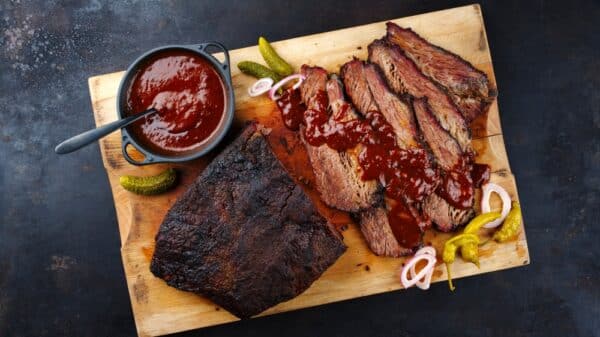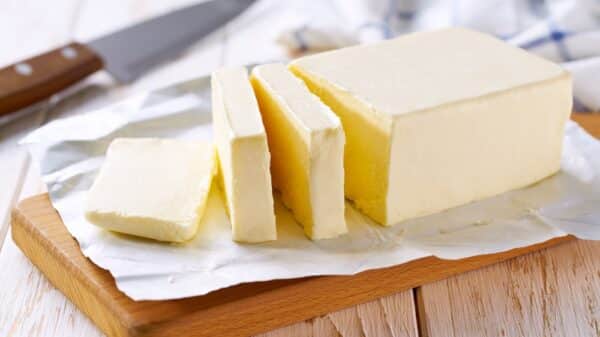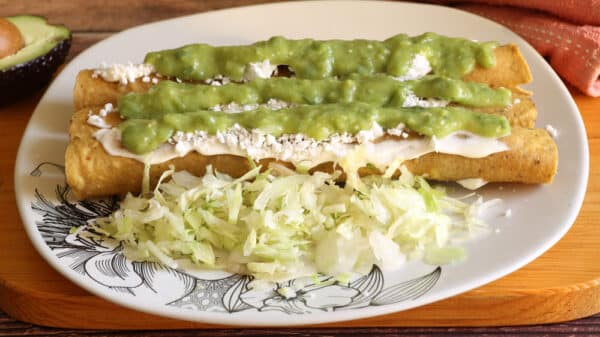When you’re faced with a tidal wave of beer choices at a bar or liquor store, the shiny, straightforward appeal of a lager can be hard to resist. But don’t let the simplicity of lagers fool you; they come with their own unique signatures that deserve a closer look, especially when we pit American lagers against their Mexican counterparts. We had the privilege of chatting with three seasoned master brewers who dedicate their careers to crafting both styles of lager. Their insights reveal intriguing nuances that might just change your next beer order.
While some might argue that the differences between American and Mexican lagers are negligible, a deeper dive—especially into the craft beer realm—unearths subtler distinctions that can enhance your drinking experience. The craft beer movement is considerably more diverse than just hoppy IPAs and bold stouts. It’s worth noting that the differences in lager styles may be even more pronounced in craft versions compared to mainstream brands. So let’s explore what these experts had to say about what makes American and Mexican lagers uniquely satisfying.
One of the first things to note is that Mexican lagers often offer more complexity in their flavor profiles. For many, the charm of a lager lies in its light and refreshing taste. Jess Fierro, the dynamic founder of Atrevida Beer Co., emphasizes this aspect: “American lagers are typically light, crisp, and refreshing. They have a mild flavor profile with very subtle malt sweetness and a low bitter finish.”
However, she points out that Mexican lagers step it up a notch. “They tend to have a slightly more intricate flavor profile,” Fierro explains. Think of it as a friend who shows up with a rich homemade dish rather than a store-bought snack. Mexican lagers often present a hint of sweetness alongside flavors of corn or rice, creating a multi-dimensional experience on the palate. And while they share some similarities with their American cousins, Mexican lagers can introduce a touch of bitterness that’s almost like a surprise twist in a story; it makes the experience all the more engaging. For dedicated lager fans, these flavors might seem subtle, but they can be game-changing for your next sip.
Now, let’s talk hops, the unsung heroes in a beer’s brewing process. Generally speaking, hops are what add bitterness to beer, and they play a vital role not just in taste, but also in a beer’s aroma. While both American and Mexican lagers employ a lighter hand on hops compared to more daring styles, there are meaningful differences to note. As Fierro explains, American lagers usually fall into a low bitterness scale with an International Bitterness Unit (IBU) rating of 10 to 20. On the flip side, Mexican lagers can occasionally break that mold, sometimes pushing into a slightly higher IBU range.
So, what does this mean for flavor? Fierro notes that the hops used in Mexican lagers often complement the overall sweetness, resulting in a brew with a complexity that American lagers sometimes lack. “Mexican lagers might use hops that introduce a more robust flavor, creating a balance with that malt sweetness,” she says. Essentially, while you might take a sip and think, “Oh, this is nice,” with a Mexican lager, you might find yourself leaning in for more.
Now, let’s get into the nitty-gritty of hop varieties. The flavor profiles of these hops can make your drinking experience feel like a fun tour through a garden of flavors. American lagers generally favor hops that contribute subtle, fresh notes—think floral or grassy essences that feel like a pleasant spring day. In contrast, Mexican lagers often embrace earthier and spiced backdrop flavors. As Fierro expresses it, “Some Mexican lagers can have herbal or spicy notes, adding that extra layer of complexity you might find in some traditional Latin cuisines.”
While these differences might slip by unnoticed to the casual drinker, for those with a more refined palate, these subtleties can become defining characteristics. Do you appreciate a lager that pulls you into its flavorful embrace, or do you lean towards the clean-cut crispness of an American lager? Each choice tells a story of culture and tradition that beer lovers can appreciate.
In the end, whether you’re catching up with friends over a cold one after a long day or exploring new tastes on a weekend adventure, understanding these nuanced differences between American and Mexican lagers can enrich your experience. Because at the end of the day, it’s all about enjoying your beer the way you like it—simply and authentically. Cheers to that!Beer is often described by its taste, but brewing is an art that encompasses much more than just flavor alone. The mouthfeel—the way a beer feels in your mouth—is a crucial, yet sometimes overlooked, aspect that can dramatically enhance your overall experience. As Doug Hasker, master brewer at Puesto, insightfully points out, Mexican lagers tend to deliver a richer mouthfeel compared to their American counterparts. “American lagers tend to have a lighter, grainy texture,” he explains, “which can, in my opinion, make them a little less interesting.”
Now, let’s not throw American lagers under the bus. Their charm lies in a smooth, clean drinkability—perfectly designed for those casual get-togethers or backyard barbecues. They prioritize refreshment and ease, appealing to a broad audience who might appreciate a less complex option. However, if you’re ready to elevate your beer journey, exploring the deeper textures of Mexican lagers could lead to a more engaging experience.
If you usually gulp down beer without a second thought, consider taking a moment to savor it. Slow down, let the beer coat your mouth, and really take in its texture and nuances. You might even take a cue from wine enthusiasts and give that lager a gentle swish before swallowing. Believe me, you’ll be amazed at how a simple shift in approach can open up layers of flavor you never realized were there.
Mexican lagers are becoming the rising stars in the realm of brewing, edging out traditional American lagers that have long dominated the market. As Hasker noted, it wasn’t too long ago that Budweiser reigned as the world’s best-selling beer, but that title has now shifted to Modelo, a Mexican lager—an occurrence that hints at a broader trend where drinkers are yearning for just a bit more flavor in their brews. “This shift in preference showcases that consumers are searching for something with greater character,” Hasker observes.
Jess Fierro, an expert in the craft beer scene, also echoes this sentiment, noting the increasing popularity of Mexican lagers within the craft community. She confidently stated, “Mexican lagers hold a prominent and growing position in the contemporary beer scene.” It’s inspiring to see how these beers have forged a dedicated niche, appealing to a diversity of beer lovers across the country.
Andy Link, the head brewer at Common Space Brewery, observed further regional preferences. “In some areas of the U.S., lagers imported from Mexico have overtaken domestic options in popularity,” he noted. This trend highlights the incredible diversity and preferences that exist in different communities—what resonates in one place might not in another, but the craft beer movement has undoubtedly fueled a hunger for more flavorful profiles, paving the way for Mexican lagers to shine.
When it comes to appearance, Mexican lagers can sometimes be a shade darker compared to American versions, thanks in part to the specific malts and adjuncts their brewers might choose. Fierro shares that while many Mexican lagers share the pale gold hue typical of lagers, they can occasionally exhibit a warmer, richer color. “If you look closely, there’s a little more depth in some Mexican lagers,” she says, while American lagers often stick to pale malts which keep their colors consistently light.
Of course, color alone isn’t enough to differentiate these lagers. Mainstream Mexican brands like Modelo and Corona shine brightly in the color spectrum, often matching the lightest American lagers. For those interested in a darker brew, exploring amber lagers and dark lagers will reveal a whole new classification that offers even more variety beyond just pilsners or traditional styles.
When considering the aromas of these two lager styles, you may be surprised to find they diverge significantly. Just as wine enthusiasts often delight in the bouquet of their choice, beer lovers can discover distinctive scents that elevate their tasting experience. According to Fierro, “American lagers tend to have a lighter aroma with subtle notes of malt, a little sweetness, and minimal complexity.” In contrast, Mexican lagers bring a sweet bouquet with hints of corn and floral notes, adding an extra dimension that enhances every sip.
As we dive deeper into the world of lagers, it becomes evident that Mexican varieties harness unique attributes—like a higher utilization of corn—creating distinct flavors and aromas that stand apart in any beer lineup. Understanding these differences not only enriches your appreciation for these popular beverages but also guides you towards the perfect choice for every occasion. So whether you’re sitting by a pool, enjoying a barbecue, or just relaxing at home, let your taste buds explore the diverse world of lagers—because life’s too short for anything less than the perfect sip.When it comes to brewing American and Mexican lagers, the differences are nuanced but fascinating, especially when you dive into the ingredients and processes involved. According to industry experts, like master brewer Andy Link, there isn’t a substantial variance between the two styles at first glance. They share similar brewing techniques, yet many brewers, including Doug Hasker, note that Mexican lagers often feature a distinctive twist— more corn is typically used in their production. Hasker aptly points out, “The larger picture is that there are very few technical differences in the process, aside from using more corn as a fermentable ingredient in the Mexican lagers.”
Now, you might be wondering why corn matters. Well, corn has long been a popular ingredient in lager brewing across various regions. However, it shines a bit brighter in Mexican lagers, where it’s heavily featured both in traditional recipes and modern variations. Just think about it—when you grab a cold Mexican lager, you’re likely sipping a brew that has corn at its heart. On the flip side, American lagers like Budweiser sometimes opt for rice, while others such as Busch lean on corn. This adds a different flavor profile, contributing to the unique identities of these lagers.
Let’s shift gears for a moment and talk about food pairings, because who doesn’t love a good meal with their beer? Whether you’re lounging at home or enjoying a night out, what you choose to eat with your lager can elevate your experience. Many beer aficionados agree that while both American and Mexican lagers can complement a range of dishes beautifully, Mexican lagers have a special knack for pairing with Latin cuisine. Hasker emphasizes, “Mexican lagers tend to be a touch more malty and complement other flavors better. When it comes down to it, all beer pairs well with tacos; Mexican beer perhaps just a little better.” This makes perfect sense if you think about hearty, spicy dishes like tacos or enchiladas; the subtle sweetness of Mexican lagers balances those bold flavors effortlessly.
Jess Fierro, another talented brewer, adds that spicy and flavorful dishes harmoniously connect with Mexican lagers. “The subtle sweetness of this style counters the heat and thirst-quenching aspects,” she says. Imagine enjoying chips and salsa on a sunny afternoon, washing it down with a crisp Mexican lager—the perfect match! On the American side, however, Fierro suggests that these lagers shine alongside lighter, fattier foods. Think salmon drizzled with a citrus glaze—simply divine when paired with a clean, crisp American lager.
Now, not only can beer be a delightful companion to food, but you can also cook with it to bring your dishes to new heights. Using Mexican lagers in recipes can add complexity to spicy dishes while American lagers can help balance richer flavors. The next time you’re grilling or trying a new recipe, consider these pairings; you might discover a new favorite way to enjoy your brews.
Exploring beer culture, you’ll find that American and Mexican lagers play very different roles in their respective environments. Picture an American tailgate, filled with high-energy events, or the cozy vibe of a craft brewery—this reflects the essence of American lager culture perfectly. Jess Fierro notes that American lagers come tied with nostalgic memories of family cookouts and camping adventures. In contrast, Mexican lagers occupy a more sophisticated space, showcasing rich regional traditions and ingredient diversity. This allows beer drinkers to explore different flavor profiles and cultural influences all in a pint-sized glass.
In recent years, awareness about local breweries has surged, and this trend transcends borders. Andy Link explains that American beer lovers favor local lagers because freshness really matters. “Flavor and aroma fade with time and harsh conditions,” he emphasizes, reflecting that the journey of imported beers can sometimes hinder their quality due to time and treatment in transit. As craft breweries make headway in the market, the demand for locally crafted, fresher beers raises expectations for the quality that beer enthusiasts expect from their lagers.
Interestingly, not all water is created equally when it comes to beer brewing. Newly discovered insights show that different treatment processes significantly influence the final product. Doug Hasker points out that while American breweries often treat their water, most Mexican craft breweries choose to forgo this step. “Most Mexican craft beer breweries do not treat their water, but the major breweries do,” he explains. Treatments might include softening the water, removing unwanted minerals, or merely cleaning it. This process is consequential; better treatment contributes to brewing a more refined beer.
Lastly, let’s delve into an endearing aspect of the brewing process. Doug Hasker adds a dash of love to his Mexican lagers that many find charming. “When I brew Mexican lagers in my brewery,” he reveals with a smile, “I tend to speak Spanish around the brew and tell it I love it throughout the day.” This personal touch adds a unique layer of cultural reverence and connection to his craft. It’s a delightful reminder that the heart and soul of brewing isn’t just about the ingredients; it’s about the passion behind them. In a world full of structured processes, infusing a bit of affection into the craft provides a personal intimacy that resonates with many—a beautiful toast to the joy and experience of beer-making.
So whether you’re reaching for an American or a Mexican lager, you’re not just choosing a drink; you’re engaging with a story that reflects its culture, history, and the passion of the people who make it. Understanding these layers not only enhances your appreciation for these brews but also connects you more deeply to the shared experience of enjoying a good beer. Cheers!
Image Source: Brent Hofacker / Shutterstock































